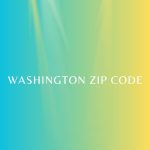Introduction
Staten Island, one of New York City’s five boroughs, is often known for its suburban charm and scenic landscapes. Nestled in the southernmost part of the city, it offers a unique blend of urban and rural living. But beyond its picturesque views and rich history, Staten Island is also defined by its ZIP codes. These seemingly mundane numbers play a crucial role in organizing the borough, influencing everything from mail delivery to real estate.
Historical Background of Staten Island
Early History
Staten Island has a storied past that dates back to the times of Native American settlements. Originally inhabited by the Lenape people, it was later explored by Europeans in the early 17th century. The island has since evolved from a rural farming area to a bustling suburban community.
Staten Island’s Evolution
Over the years, Staten Island has undergone significant transformations. From being a battleground during the American Revolution to becoming a major transportation hub with the construction of the Verrazzano-Narrows Bridge, the island’s development is deeply intertwined with its geographical and cultural shifts.
Understanding ZIP Codes
Definition and Purpose
ZIP codes, short for “Zone Improvement Plan” codes, are essential for efficiently directing mail and packages. Introduced by the United States Postal Service (USPS) in 1963, these codes help to streamline the sorting and delivery process, ensuring that correspondence reaches its intended destination promptly.
How ZIP Codes Are Assigned
ZIP codes are assigned based on geographic regions, starting from the east coast and moving westward. The first digit of a ZIP code represents a group of U.S. states, with the second and third digits indicating a specific region or city. The final two digits pinpoint the exact location within that region.
Staten Island’s ZIP Codes
Overview of Staten Island’s ZIP Code System
Staten Island’s ZIP code system is designed to cover its diverse neighborhoods, each with its unique character and community. The island’s ZIP codes range from 10301 to 10314, encapsulating various residential, commercial, and industrial areas.
Key ZIP Codes and Their Areas
Here’s a closer look at the key ZIP codes that define Staten Island and the neighborhoods they encompass:
10301: St. George and Surrounding Areas
Overview
The 10301 ZIP code covers St. George, the northernmost tip of Staten Island. This area is a gateway to the island, thanks to the Staten Island Ferry terminal that connects residents to Manhattan.
Key Landmarks
St. George is home to several landmarks, including the St. George Theatre, the Staten Island Museum, and the Richmond County Bank Ballpark, where the Staten Island Yankees play.
10302: Port Richmond
Overview
Port Richmond, covered by the 10302 ZIP code, is one of the oldest neighborhoods on Staten Island, known for its rich history and diverse population.
Key Landmarks
Notable sites in Port Richmond include the Port Richmond Avenue, lined with historic buildings and local shops, and the Reformed Church on Staten Island, which dates back to the 17th century.
10303: Mariners Harbor and Arlington
Overview
The 10303 ZIP code encompasses Mariners Harbor and Arlington, areas known for their industrial past and vibrant communities.
Key Landmarks
Key attractions include Mariners Harbor Library and Arlington Park, offering residents recreational and educational opportunities.
10304: Stapleton and Clifton
Overview
Stapleton and Clifton fall under the 10304 ZIP code, areas that are undergoing significant redevelopment and gentrification.
Key Landmarks
Stapleton is known for its waterfront, the Staten Island Urby complex, and the historic Stapleton Town Hall. Clifton boasts the Garibaldi-Meucci Museum and the scenic Tappen Park.
10305: Rosebank and Shore Acres
Overview
The 10305 ZIP code includes Rosebank and Shore Acres, neighborhoods that offer a mix of suburban tranquility and urban convenience.
Key Landmarks
Landmarks here include the Alice Austen House, a museum dedicated to the pioneering photographer, and Fort Wadsworth, one of the oldest military forts in the United States.
10306: New Dorp and Oakwood
Overview
New Dorp and Oakwood, covered by the 10306 ZIP code, are bustling areas with a strong sense of community and ample amenities.
Key Landmarks
New Dorp Lane is a central commercial strip, while Oakwood Beach offers scenic views and outdoor activities. The Miller Field, a historic airfield, is also a notable site.
10307: Tottenville
Overview
Tottenville, under the 10307 ZIP code, is the southernmost neighborhood in both Staten Island and New York City, known for its quiet, residential vibe.
Key Landmarks
Highlights include Conference House Park, where a peace conference was held during the American Revolution, and the historic Bethel Methodist Church.
10308: Great Kills
Overview
The 10308 ZIP code covers Great Kills, a neighborhood known for its maritime history and family-friendly environment.
Key Landmarks
Great Kills Park, part of the Gateway National Recreation Area, offers extensive outdoor activities. The neighborhood is also home to numerous marinas and yacht clubs.
10309: Charleston and Pleasant Plains
Overview
Charleston and Pleasant Plains fall under the 10309 ZIP code, areas known for their suburban developments and shopping centers.
Key Landmarks
The Staten Island Mall is a major shopping destination, and Bloomingdale Park offers recreational spaces for residents.
10310: West Brighton
Overview
West Brighton, covered by the 10310 ZIP code, is a culturally rich area with a mix of residential and commercial properties.
Key Landmarks
Notable landmarks include the Staten Island Zoo and the historic Snug Harbor Cultural Center, which hosts various arts and cultural events.
10312: Eltingville and Huguenot
Overview
The 10312 ZIP code includes Eltingville and Huguenot, neighborhoods known for their suburban charm and family-oriented atmosphere.
Key Landmarks
Eltingville is home to the Eltingville Transit Center, a major transportation hub, while Huguenot boasts scenic parks and residential areas.
10314: Bulls Head and Westerleigh
Overview
The 10314 ZIP code covers Bulls Head and Westerleigh, areas characterized by their suburban feel and community-oriented lifestyle.
Key Landmarks
Westerleigh Park and Willowbrook Park are popular recreational spots. The College of Staten Island, a part of the City University of New York, is also located here.
Conclusion
Staten Island’s ZIP codes offer a fascinating glimpse into the borough’s diverse neighborhoods and communities. Each ZIP code represents a unique facet of the island, from historic landmarks and scenic parks to bustling commercial areas and tranquil residential streets. Understanding these ZIP codes is not only essential for navigating Staten Island but also for appreciating the rich tapestry of life that this unique borough has to offer.
FAQs
What is the largest ZIP code in Staten Island?
The largest ZIP code in terms of area is 10309, covering Charleston, Pleasant Plains, and parts of Rossville.
How do ZIP codes affect property values?
ZIP codes can significantly influence property values, as they often reflect the desirability of a neighborhood, access to amenities, and overall quality of life.
Can ZIP codes change over time?
Yes, ZIP codes can change due to factors such as population growth, urban development, and administrative adjustments by the USPS.
How do I find my ZIP code?
You can find your ZIP code by using the USPS ZIP code lookup tool on their website or by checking your mail for the ZIP code information.
Why are ZIP codes important for mail delivery?
ZIP codes are crucial for mail delivery because they help the USPS sort and deliver mail efficiently, ensuring that it reaches the correct destination quickly.










